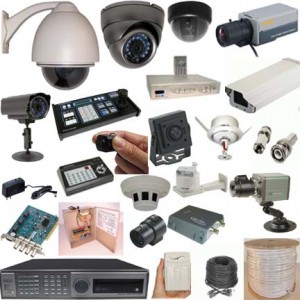DEALING SECURITY SYSTEMS
.Management
The plans involving security management are the most important element of any risk management strategy. The plans must define who is responsible for the management of security and how that management is to be implemented. The treatment plan must include:
• An organisation plan that clearly defines the global outcome required and the charter of the
urban transport organisation. The policy must be meaningful, achievable and acceptable in the context of the security environment created by the threat levels.
• An organisation plan that ensures that the facility is headed by an appropriately experienced security professional, who is empowered to implement the risk management strategy defined for the facility. The manager must have a direct line of communication with the CEO according to the gravity of the situation.
• A hierarchy of security that defines the role for each member of the staff, whether permanent, part time or on contract, who operate in the facility. Security is not just the responsibility of the guard force. It is everyone’s responsibility; and the more the pairs of eyes and ears that can be harnessed, the more likely that intelligence, which can contribute to the prevention and mitigation of an incident, can be gathered. A comprehensive training programme that is delivered in house, tailored to meet the particular treatment plans being implemented, is likely to be the most beneficial. The training is not only to cater for security staff but for all staff who participate in the urban transport process.
Intelligence
One of the more important treatment plans is for the management and dissemination of intelligence. Intelligence gathering and its generation is usually the province of the public sector. It is generated in a manner and from sources that the private sector cannot normally tap into. This is not to say that the private sector cannot contribute to the supply of intelligence by harnessing the multitude of sources that are employed there. However, the analysis and dissemination must, by necessity, be coordinated by the public sector. Intelligence is the key to deterrence and the prime weapon in the preclusion of any major attack on any facility or organisation. Urban Transport authorities must tap as much as possible into the intelligence available and make use of not only the networks of the local authorities but also similar transport authorities in other countries to keep the local authorities informed of current trends, threats and methodologies being used by those perpetrating the threats. The fragmentation of information between differing and competing authorities has been the root cause of not preventing a number of major incidents that have occurred across the globe in the last decade In many cases, retrospective analysis has indicated a clear audit trail of information, which with better authority interaction, may have been able to prevent the incident from occurring The regular interaction between groups that gather and utilize intelligence with live updating of incidents by informal and formal communications is ultimately the responsibility of the intelligence agencies and the security manager One of the more important outcomes of inter agency interaction is development and agreement of standard alert level responses. These can be transmitted to the agencies on a pre programmed basis to allow upgrading of response and implementation of agreed management criteria to meet the alert level advisory In addition to receiving information, the urban transport authority security departments and personnel are also significant sources of gaining intelligence. With even minimal training the considerable numbers of personnel who operate on urban transport systems have enormous potential to gather information which could assist in mitigation of the attack. The intelligence flow however must have established paths whereby information is delivered in a meaningful manner in both directions. There is little use of gaining intelligence if it is not utilised. Regular bulletins to those who need to know and will be able to make the most effective use of information in both written and verbal form, keep those responsible for the delivery of security, up dated and involved.
Technology
Technology must be a functional element of the overall security solution. Technology can operate on an individual or system wide basis, depending on the configuration of the treatment plans and how the plans utilize technology in an integrated solution The system should also be pre programmed to initiate recording and control so that the system presents information for operators as to the action to be initiated. The system must be capable of initiating pre programmed messages through the various communication systems, as required.
The technologies employed for urban transport systems should also include:
Remote audio projection so that unmanned stations for both bus andrail can project audio to the stations remotely from a centralised location to broadcast both general and specific warnings to patrons and offenders alike. Remote emergency management of rolling stock so that under certain threats the drive mechanisms or engines of the bus or train can be shut down and the vehicle be brought to a controlled stop. Serious consideration of the most effective explosive detection system yet devised—trained dogs! This consideration is important not only because at this point in time they are the most technically effective, but also because they are currently the most cost effective in volumes of materials that can be screened per unit time. These also have a significant deterrence effect and can give comfort to the public.
Summary
The protection of any urban transportation system or elements of it can never be guaranteed. Unlike aviation where a method of screening of all personnel using the service to known threats is achievable, with urban transport, the sheer volume of public who use the systems regularly means that they cannot be accorded equivalent protection as aviation. Acknowledging this, the key to achieving a reasonable level of risk management is to maximise the use of intelligence and where possible preclude or mitigate the impact of the attack and respond in the most effective manner. Given the diverse roles necessary to achieve a cohesive outcome, the need for a synergized response from public and private sectors is vital. The most effective solutions will only occur when there is considerable cooperation of both sectors in a harmonious manner. To achieve this, leadership must originate at the public or government sector and then be embraced with a spirit of cooperation by the private sector. Together they will contribute to the successful generation of the treatment plans above the underpinning risk management strategies to be adopted. The application of sound and accepted treatment plans in the successful function of security for urban transportation is the vital framework upon which the protection of the system can be achieved most effectively.







